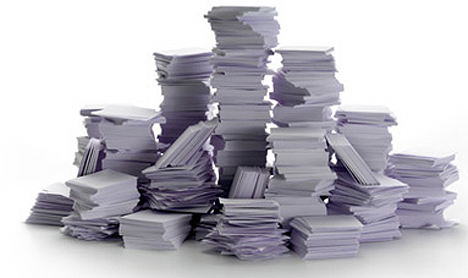 In the current printing technology race with all the buzz about new hardware offerings it seems all too easy to forget the paper. After all, it is just paper and printers have been working with paper since before Gutenberg. With the exception of the “green movement” and sustainability, paper seldom captures any industry headlines.
In the current printing technology race with all the buzz about new hardware offerings it seems all too easy to forget the paper. After all, it is just paper and printers have been working with paper since before Gutenberg. With the exception of the “green movement” and sustainability, paper seldom captures any industry headlines.
Many of the more traditional print equipment technologies such as lithography and flexography are mature, and over time have developed well documented approaches for adapting to different papers and even broader substrates such as plastic or metals.
Newer digital printing technologies, such as production inkjet, require a fresh look at paper options. “The properties of the paper substrate are important not only because the substrate is visible between the printed areas but also because the substrate defines the background reflectance for the ink layer. Moreover, variables such as optical properties, mechanical properties and permeability to liquids directly affect image quality, productivity and price.” Additionally, transitioning from black and white digital print to full color applications present more new challenges and opportunities for paper. Inkjet printing, unlike other print processes, relies on ink particles being sprayed onto the paper without any contact between the paper and the print head. Successful inkjet implementations require attention to matching ink, paper, and equipment
Paper is truly relevant and important in choosing and implementing inkjet solutions. To assure effective solutions, paper requirements must be understood and clearly defined in the overall application requirements. If possible, testing system and paper combinations should be a part of the solution selection process. This includes reviewing the results with customer groups. Some of the questions which might be considered include:
- Is the strategy to provide a paper focused solution or to offer client a broad range of choices?
- Will the same paper work for digital sheet fed and continuous equipment?
- What paper weight/thickness is required to get desirable quality and opacity? How will this impact mailing costs?
- What are the archive and permanence requirements?
- Can the paper types be consolidated to reduce changeover and set ups?
- Do you require recycled paper products?
- Can you find comparable paper from multiple sources?
The cost parameters in digital printing vary substantially from traditional offset printing. Offset cost of ink averages 10% of the printed product while paper is 30%; in inkjet this is reversed with inks and bonding agents comprising nearly 30% of the cost, while paper is about 10%. This change may open a broader range of paper options if reduced ink consumption results offset paper costs.
To achieve an optimum solution the system, paper and ink requirements must all be tied together and evaluated. Ultimately, the best solution must meet the broadest range of customer requirements to improve ROI. Printers must constantly re-evaluate their choices for paper as the technology is rapidly evolving.
Conclusion:
Do not forget the paper! Get a range of paper experts to support and assist you. You buy equipment once but you buy paper every day!
